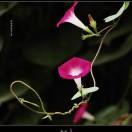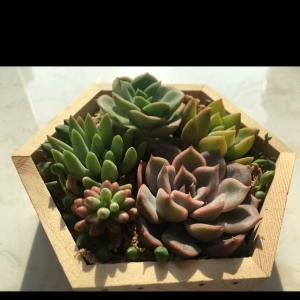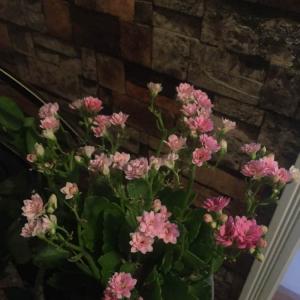文章
Miss Chen
2018年02月24日

Description: This perennial wildflower consists of a rosette, or clustered rosettes, of basal leaves from which one or more flowering stalks develop. The ascending to spreading basal leaves are 1-6" long and 1/8–1/2" (3-12 mm.) across; they areColonies of Flowering Plants dark green, linear-oblanceolate in shape, smooth along their margins, and mostly hairless. The leaves of plants that are under stress from drought may become grayish green. Individual flowerheads develop at the apex of unbranched stalks that are 4-12" high; these flowering stalks are more or less erect. The stalks are rather stout and more or less finely pubescent. Individual flowerheads span 1-1¾" across, consisting of 10-30 ray florets that surround a dense cluster of 50 or more disk florets. The petal-like rays of the ray florets are ¼–¾" long, bright yellow, oblong in shape, and divided into 3 blunt teeth at their tips. The tiny disk florets are golden yellow, tubular in shape, and lobed along their upper rims. Both ray and disk florets are fertile. Around the base of each flowerhead, there are green floral bracts (phyllaries) in 2-3 series. Individual floral bracts are about ¼" in length, finely pubescent, and oblong-ovate with rounded tips. The blooming period usually occurs from late spring to early summer. A colony of plants may bloom for about a month. The florets are replaced by small achenes that are angular and finely pubescent; they become mature during the summer. At the apex of each achene, there is a tiny crown of 5 or more chaffy scales that are lanceolate in shape. The achenes are distributed by gravity and wind, although they usually don't travel far from the mother plant. The root system consists of a short stout caudex that eventually branches, forming a cluster of plants from vegetative offsets.
Cultivation: The preference is full sun, well-drained mesic to dry conditions, and a gritty alkaline soil containing gravel or rocky material. This wildflower can be cultivated in rock gardens. The seeds require no winter dormancy and should be sowed during the same year that they are produced.
Range & Habitat: Lakeside Daisy is a rare native wildflower in Illinois, having been found in only Tazewell and Will counties (see Distribution Map). It is state-listed as 'endangered' and federally listed as 'threatened.' At one time, this wildflower was extirpated from the wild in Illinois, although it still existed in private gardens in the Chicago area. More recently, it has been successfully reintroduced in various natural areas of the state. The largest population in the United States exists in Marblehead Peninsula along Lake Erie in Ohio. Habitats consist of dry dolomite prairies and gravel prairies, gravelly hill prairies, sand-gravel terraces along major rivers, ledges along cliffs, and limestone quarries. This wildflower is found in rocky areas with sparse vegetation and can tolerate minor amounts of disturbance.

Faunal Associations: Both nectar and pollen are available from the flowerheads, which attract bees, flies, beetles, butterflies, and skippers. Floral bee visitors include bumblebees, small carpenter bees (Ceratina spp.), and Halictid bees. Cross-pollination is required because individual plants are genetically self-incompatible. Insects that feed on the Lakeside Daisy include grasshoppers and the larvae of an unidentified weevil; the latter feeds on the seeds. The flowering stalks are eaten occasionally by the White-Tailed Deer and Cottontail Rabbit. In the Western states, related species in the Hymenoxys/Tetraneuris complex are known to have toxic leaves that can poison cattle and sheep, however the toxicity of the more eastern Lakeside Daisy has not been determined.
Photographic Location: A botanical garden in the Chicago area. The photographs of the Lakeside Daisy were taken by Jim Ault (Copyright © 2010).

Comments: The Lakeside Daisy is an attractive plant. This wildflower is rare because of its restrictive habitat requirements and the limited distribution of its seeds. Lakeside Daisy is one of several spring-blooming species in the Aster family that have yellow flowerheads and rosettes of basal leaves. It can be distinguished from these other species by its narrow dark green leaves, unbranched flowering stalks, three-toothed rays, and achenes with tiny crowns of scales (rather than a tufts of hairs). Other closely related species exist in the Western states. The Lakeside Daisy is sometimes classified as var. glabra of the western Hymenoxys acaulis. However, this latter species differs by having fewer ray florets (less than 15), floral bracts (phyllaries) with awned pointed tips, and basal leaves that are gray-green with silky hairs.
Cultivation: The preference is full sun, well-drained mesic to dry conditions, and a gritty alkaline soil containing gravel or rocky material. This wildflower can be cultivated in rock gardens. The seeds require no winter dormancy and should be sowed during the same year that they are produced.
Range & Habitat: Lakeside Daisy is a rare native wildflower in Illinois, having been found in only Tazewell and Will counties (see Distribution Map). It is state-listed as 'endangered' and federally listed as 'threatened.' At one time, this wildflower was extirpated from the wild in Illinois, although it still existed in private gardens in the Chicago area. More recently, it has been successfully reintroduced in various natural areas of the state. The largest population in the United States exists in Marblehead Peninsula along Lake Erie in Ohio. Habitats consist of dry dolomite prairies and gravel prairies, gravelly hill prairies, sand-gravel terraces along major rivers, ledges along cliffs, and limestone quarries. This wildflower is found in rocky areas with sparse vegetation and can tolerate minor amounts of disturbance.

Faunal Associations: Both nectar and pollen are available from the flowerheads, which attract bees, flies, beetles, butterflies, and skippers. Floral bee visitors include bumblebees, small carpenter bees (Ceratina spp.), and Halictid bees. Cross-pollination is required because individual plants are genetically self-incompatible. Insects that feed on the Lakeside Daisy include grasshoppers and the larvae of an unidentified weevil; the latter feeds on the seeds. The flowering stalks are eaten occasionally by the White-Tailed Deer and Cottontail Rabbit. In the Western states, related species in the Hymenoxys/Tetraneuris complex are known to have toxic leaves that can poison cattle and sheep, however the toxicity of the more eastern Lakeside Daisy has not been determined.
Photographic Location: A botanical garden in the Chicago area. The photographs of the Lakeside Daisy were taken by Jim Ault (Copyright © 2010).

Comments: The Lakeside Daisy is an attractive plant. This wildflower is rare because of its restrictive habitat requirements and the limited distribution of its seeds. Lakeside Daisy is one of several spring-blooming species in the Aster family that have yellow flowerheads and rosettes of basal leaves. It can be distinguished from these other species by its narrow dark green leaves, unbranched flowering stalks, three-toothed rays, and achenes with tiny crowns of scales (rather than a tufts of hairs). Other closely related species exist in the Western states. The Lakeside Daisy is sometimes classified as var. glabra of the western Hymenoxys acaulis. However, this latter species differs by having fewer ray florets (less than 15), floral bracts (phyllaries) with awned pointed tips, and basal leaves that are gray-green with silky hairs.
0
0
文章
Miss Chen
2018年02月24日

Description: This perennial wildflower is 1-2' tall, sending up one or more stems from the base that are unbranched or sparingly branched. The stems are light green, terete, and hairy. Alternate compound leaves are widely spreading; they are odd-pinnate with 9-25 leaflets. Individual leaflets are up to 1" long and ¼" across; they are medium green to grayish green, oblong to narrowly elliptic in shape, and smooth along their margins. Upper surfaces of the leaflets are hairless to silky-hairy, while their lower surfaces are pubescent to silky-hairy. Each leaflet has a prominent central vein. The central stalk (rachis) and petiole of each compound leaf is pubescent. At the base of each petiole, there is a pair of small stipules about ¼" long. The stems terminate in short dense racemes about 2-3" long that are covered in buds and bicolored flowers facing all directions. The racemes are held a little above the foliage on short peduncles. Individual flowers are ¾" long and across, consisting of 5 petals, a short tubular calyx with 5 teeth, 10 stamens, and a pistil. Each flower has a typical pea-like floral structure, consisting of an upright banner and a pair of lateral wings that project forward to enclose the keel. The broad banner is white to pale greenish yellow, while the wings are deep rosy pink. The pedicels of the flowers and their calyces are light green and pubescent. The blooming period occurs from early to mid-summer and lasts about 3 weeks. Afterwards, the flowers are replaced by widely spreading seedpods about 1½-3" long. These seedpods are initially light green, but later turn brown; they are silky-hairy. The seedpods are narrowly cylindrical and slightly flattened in shape; each pod contains several seeds that are reniform and somewhat flattened. The root system consists of a deep taproot.
Cultivation: The preference is full or partial sun, mesic to dry conditions, and an acidic sandy soil. Goat's Rue adds nitrogen to the soil.
Range & Habitat: The native Goat's Rue is occasional in all areas of Illinois, except the east-central section, where it is absent (see Distribution Map). Habitats include upland sand prairies, sandy hill prairies, sand dunes, upland sandy savannas, upland rocky savannas, and sandstone glades. In more wooded areas, Goat's Rue typically occurs where oaks are the dominant trees.
Faunal Associations: The nectar and pollen of the flowers attract leaf-cutting bees (Megachile spp., Hoplitis spp.) and possibly other long-tongued bees. The caterpillars of the skipper, Thorybes bathyllus (Southern Cloudywing), feed on the foliage of Goat's Rue and other species in the Bean family. Other insect feeders include caterpillars of the moth Semiothisa eremiata (Three-lined Angle), seed-eating larvae of two straight-snouted weevils (Apion segnipes, Apion perforicolle), the plant bug Teleorhinus tephrosicola, the blister beetle Epicauta murina, and several leaf beetles (Bassareus lituratus, Odontota horni, Odontota notata, Pachybrachis othonus, Phyllecthris gentilis). Among vertebrate animals, the seeds are eaten by the Wild Turkey, while cattle have been observed to browse on the foliage. The roots contain rotenone, which is toxic to insects and fish.

Photographic Location: The photograph of the flowering plant was taken by Keith & Patty Horn (Copyright © 2009) at a prairie in Fayette County, Illinois. The photograph of the plants with mature seedpods was taken by John Hilty at Hooper Branch Savanna Nature Preserve in Iroquois County, Illinois.
Comments: Because of its attractive bicolored flowers and widely spreading seedpods, Goat's Rue is fairly easy to identify. If only the foliage is present, then it is possible to confuse this wildflower with Amorpha canescens (Leadplant), Dalea foliosa (Leafy Prairie Clover), and possibly other species in the Bean family. These latter two species have very short seedpods and their flowers are much smaller in size than those of Goat's Rue. Across different populations of Goat's Rue, there is considerable variation in the hairiness of the foliage. Western populations that are found in sunny habitats often have leaflets that are densely covered with silky hairs, while eastern populations that occur in more shaded habitats have leaflets that are less conspicuously hairy.
Cultivation: The preference is full or partial sun, mesic to dry conditions, and an acidic sandy soil. Goat's Rue adds nitrogen to the soil.
Range & Habitat: The native Goat's Rue is occasional in all areas of Illinois, except the east-central section, where it is absent (see Distribution Map). Habitats include upland sand prairies, sandy hill prairies, sand dunes, upland sandy savannas, upland rocky savannas, and sandstone glades. In more wooded areas, Goat's Rue typically occurs where oaks are the dominant trees.
Faunal Associations: The nectar and pollen of the flowers attract leaf-cutting bees (Megachile spp., Hoplitis spp.) and possibly other long-tongued bees. The caterpillars of the skipper, Thorybes bathyllus (Southern Cloudywing), feed on the foliage of Goat's Rue and other species in the Bean family. Other insect feeders include caterpillars of the moth Semiothisa eremiata (Three-lined Angle), seed-eating larvae of two straight-snouted weevils (Apion segnipes, Apion perforicolle), the plant bug Teleorhinus tephrosicola, the blister beetle Epicauta murina, and several leaf beetles (Bassareus lituratus, Odontota horni, Odontota notata, Pachybrachis othonus, Phyllecthris gentilis). Among vertebrate animals, the seeds are eaten by the Wild Turkey, while cattle have been observed to browse on the foliage. The roots contain rotenone, which is toxic to insects and fish.

Photographic Location: The photograph of the flowering plant was taken by Keith & Patty Horn (Copyright © 2009) at a prairie in Fayette County, Illinois. The photograph of the plants with mature seedpods was taken by John Hilty at Hooper Branch Savanna Nature Preserve in Iroquois County, Illinois.
Comments: Because of its attractive bicolored flowers and widely spreading seedpods, Goat's Rue is fairly easy to identify. If only the foliage is present, then it is possible to confuse this wildflower with Amorpha canescens (Leadplant), Dalea foliosa (Leafy Prairie Clover), and possibly other species in the Bean family. These latter two species have very short seedpods and their flowers are much smaller in size than those of Goat's Rue. Across different populations of Goat's Rue, there is considerable variation in the hairiness of the foliage. Western populations that are found in sunny habitats often have leaflets that are densely covered with silky hairs, while eastern populations that occur in more shaded habitats have leaflets that are less conspicuously hairy.
0
0
文章
Miss Chen
2018年02月23日

Description: This herbaceous perennial plant is 1½–3' tall and largely unbranched, except near the inflorescence. The central stem is light green, terete, and glabrous to sparsely short-hairy. Alternate leaves occur along the central stem, becoming shorter and more narrow as they ascend. The lower leaves are up to 3" long and 1½" across; they are narrowly oval to ovate in shape and smooth along their margins. The middle leaves are up to 2½" long and ¾" across; they are narrowly lanceolate to lanceolate in shape and smooth along their margins. The upper leaves are up to 1¼" long and ¼" across; they are linear-oblong in shape and smooth along their margins. The upper leaf surfaces are medium to dark green and glabrous or nearly so, while their lower surfaces are light green and glabrous to short-hairy along the major veins. The petioles of these leaves are up to 2" long, becoming shorter as they ascend the stem – however the upper leaves are sessile. The petioles are light green, concave above and convex below, and glabrous to slightly hairy. In addition to the deciduous alternate leaves, this plant also produces a loose tuft of semi-evergreen basal leaves. These basal leaves are similar in appearance to the lower alternate leaves, except they are more broad (oval to oval-cordate in shape) and their margins are sometimes crenate-serrate. The petioles of basal leaves are up to 3" long. The central stem terminates in a panicle of flowerheads that is ½–1½' long and about one-half as much across. When a plant is in bloom, it often leans to one side because of the weight of the inflorescence.
Several Flowerheads
The panicle has a rachis (central stalk) and several ascending primary branches; these branches divide into secondary and tertiary branches that terminate in daisy-like flowerheads. The rachis and branches are light green and glabrous to sparsely short-hairy; scale-like to linear leafy bracts up to ¾" long occur at intervals along these branches. Each flowerhead is about ½" across or slightly larger, consisting of 10-25 ray florets that surround numerous disk florets. The petaloid rays are lavender or light blue (rarely white), linear-oblong in shape, slightly notched at their tips, and widely spreading. The tiny corollas of the disk florets are tubular in shape with 5 ascending to spreading lobes along their upper rims; these corollas are initially yellow, but they later become purplish red and finally brown. Surrounding the base of each flowerhead, there are scale-like bracts (phyllaries) that are arranged in 3-5 series that are appressed together or slightly spreading. These floral bracts are about 2 mm. long, lanceolate in shape, and mostly light green, except toward their tips, where there are dark green patches that are diamond-shaped. The blooming period occurs from late summer into autumn, lasting about 1 month for a colony of plants. Afterwards, the florets are replaced by small bullet-shaped achenes (about 2 mm. in length) that have small tufts of hair at their apices. These achenes are distributed by the wind. The root system is fibrous and rhizomatous; older plants may develop a short caudex.

Cultivation: The preference is full or partial sun and mesic to dry conditions. This plant is rather indifferent to soil characteristics – it can flourish in soil that is loamy, sandy, rocky, or contains clay. This plant is easy to grow and drought resistant; the lower leaves are occasionally marred by powdery mildew and other foliar diseases.
Range & Habitat: The native Sky Blue Aster occurs occasionally in the northern and western halves of Illinois, but it is uncommon or absent elsewhere (see Distribution Map). Habitats include mesic to dry prairies, sand prairies, hill prairies, rocky upland woodlands, upland savannas, upland sandy savannas, woodland borders, sandy meadows, limestone glades, and roadside embankments. This plant is usually found in higher quality natural areas where the original ground flora is still intact. Occasional wildfires or other disturbance that reduce competition from woody vegetation is beneficial in maintaining populations of this plant.

Faunal Associations: For Sky Blue Aster, the nectar and pollen of the flowerheads attract bumblebees, digger bees (Melissodes spp.), leaf-cutting bees (Megachile spp.), Halictid bees (Agapostemon spp., Halictus spp., Lasioglossum spp.), Andrenid bees, Syrphid flies, bee flies (Bombyliidae), butterflies, skippers, miscellaneous beetles, and other insects (Reed, 1993). Bees that are specialist pollinators (oligoleges) of asters (Symphyotrichum spp.) and closely related composites include Andrena asteris, Andrena nubecula, Andrena simplex, Colletes simulans armatus, and Melissodes dentiventris. Other insects feed destructively on the leaves, flowerheads, and other parts of asters. These species include larvae of the Aster Leafminer Fly (Calycomyza humeralis), larvae of the Papery Blister Gall Midge (Asteromyia laeviana), larvae of fruit flies, plant bugs, the Goldenrod Lace Bug (Corythucha marmorata), aphids (especially Uroleucon spp.), the Aster Leafhopper (Macrosteles fascifrons), Blatchley's Walkingstick (Manomera blatchleyi), and grasshoppers (see the Insect Table for a listing of these and other species). In addition, larvae of the butterflies Silvery Checkerspot (Chlosyne nycteis) and Pearl Crescent (Phyciodes tharos) feed on asters, as do larvae of the Aster Borer Moth (Carmenta corni), The Asteroid (Cucullia asteroides), and many other moths (see Moth Table). Among birds, the Ruffed Grouse and Wild Turkey browse on the leaves and seeds of asters; the Tree Sparrow also eats the seeds during the winter. Among mammals, the Cottontail Rabbit and White-Tailed Deer browse on the foliage, while the White-footed Mouse eats the seeds (Martin et al., 1951/1961). Groundhogs, cattle, horses, and other livestock also browse on the foliage, especially when it is young and tender.

Photographic Location: The photographs were taken at the webmaster's wildflower garden in Urbana, Illinois.
Comments: For the size of the plant, the inflorescence of Sky Blue Aster (Symphyotrichum oolentangiense) is rather large and showy. This species of aster closely resembles Short's Aster (Symphyotrichum shortii), even though the latter species is a woodland aster. However, the upper leaves of Short's Aster are often narrowly cordate, rather than narrowly lanceolate or linear, and its flowerheads are slightly larger in size. Another similar species, Smooth Blue Aster (Symphyotrichum laeve), has alternate leaves that are all sessile, while Sky Blue Aster has lower to middle leaves with petioles. Other asters (Symphyotrichum spp.) have hairier foliage, or their leaves are narrow throughout, or they have more cordate leaves, or their alternate leaves have toothed margins. Older scientific names for Sky Blue Aster include Aster azureus and Aster oolentangiensis, while another common name for this species is Azure Aster.
Several Flowerheads
The panicle has a rachis (central stalk) and several ascending primary branches; these branches divide into secondary and tertiary branches that terminate in daisy-like flowerheads. The rachis and branches are light green and glabrous to sparsely short-hairy; scale-like to linear leafy bracts up to ¾" long occur at intervals along these branches. Each flowerhead is about ½" across or slightly larger, consisting of 10-25 ray florets that surround numerous disk florets. The petaloid rays are lavender or light blue (rarely white), linear-oblong in shape, slightly notched at their tips, and widely spreading. The tiny corollas of the disk florets are tubular in shape with 5 ascending to spreading lobes along their upper rims; these corollas are initially yellow, but they later become purplish red and finally brown. Surrounding the base of each flowerhead, there are scale-like bracts (phyllaries) that are arranged in 3-5 series that are appressed together or slightly spreading. These floral bracts are about 2 mm. long, lanceolate in shape, and mostly light green, except toward their tips, where there are dark green patches that are diamond-shaped. The blooming period occurs from late summer into autumn, lasting about 1 month for a colony of plants. Afterwards, the florets are replaced by small bullet-shaped achenes (about 2 mm. in length) that have small tufts of hair at their apices. These achenes are distributed by the wind. The root system is fibrous and rhizomatous; older plants may develop a short caudex.

Cultivation: The preference is full or partial sun and mesic to dry conditions. This plant is rather indifferent to soil characteristics – it can flourish in soil that is loamy, sandy, rocky, or contains clay. This plant is easy to grow and drought resistant; the lower leaves are occasionally marred by powdery mildew and other foliar diseases.
Range & Habitat: The native Sky Blue Aster occurs occasionally in the northern and western halves of Illinois, but it is uncommon or absent elsewhere (see Distribution Map). Habitats include mesic to dry prairies, sand prairies, hill prairies, rocky upland woodlands, upland savannas, upland sandy savannas, woodland borders, sandy meadows, limestone glades, and roadside embankments. This plant is usually found in higher quality natural areas where the original ground flora is still intact. Occasional wildfires or other disturbance that reduce competition from woody vegetation is beneficial in maintaining populations of this plant.

Faunal Associations: For Sky Blue Aster, the nectar and pollen of the flowerheads attract bumblebees, digger bees (Melissodes spp.), leaf-cutting bees (Megachile spp.), Halictid bees (Agapostemon spp., Halictus spp., Lasioglossum spp.), Andrenid bees, Syrphid flies, bee flies (Bombyliidae), butterflies, skippers, miscellaneous beetles, and other insects (Reed, 1993). Bees that are specialist pollinators (oligoleges) of asters (Symphyotrichum spp.) and closely related composites include Andrena asteris, Andrena nubecula, Andrena simplex, Colletes simulans armatus, and Melissodes dentiventris. Other insects feed destructively on the leaves, flowerheads, and other parts of asters. These species include larvae of the Aster Leafminer Fly (Calycomyza humeralis), larvae of the Papery Blister Gall Midge (Asteromyia laeviana), larvae of fruit flies, plant bugs, the Goldenrod Lace Bug (Corythucha marmorata), aphids (especially Uroleucon spp.), the Aster Leafhopper (Macrosteles fascifrons), Blatchley's Walkingstick (Manomera blatchleyi), and grasshoppers (see the Insect Table for a listing of these and other species). In addition, larvae of the butterflies Silvery Checkerspot (Chlosyne nycteis) and Pearl Crescent (Phyciodes tharos) feed on asters, as do larvae of the Aster Borer Moth (Carmenta corni), The Asteroid (Cucullia asteroides), and many other moths (see Moth Table). Among birds, the Ruffed Grouse and Wild Turkey browse on the leaves and seeds of asters; the Tree Sparrow also eats the seeds during the winter. Among mammals, the Cottontail Rabbit and White-Tailed Deer browse on the foliage, while the White-footed Mouse eats the seeds (Martin et al., 1951/1961). Groundhogs, cattle, horses, and other livestock also browse on the foliage, especially when it is young and tender.

Photographic Location: The photographs were taken at the webmaster's wildflower garden in Urbana, Illinois.
Comments: For the size of the plant, the inflorescence of Sky Blue Aster (Symphyotrichum oolentangiense) is rather large and showy. This species of aster closely resembles Short's Aster (Symphyotrichum shortii), even though the latter species is a woodland aster. However, the upper leaves of Short's Aster are often narrowly cordate, rather than narrowly lanceolate or linear, and its flowerheads are slightly larger in size. Another similar species, Smooth Blue Aster (Symphyotrichum laeve), has alternate leaves that are all sessile, while Sky Blue Aster has lower to middle leaves with petioles. Other asters (Symphyotrichum spp.) have hairier foliage, or their leaves are narrow throughout, or they have more cordate leaves, or their alternate leaves have toothed margins. Older scientific names for Sky Blue Aster include Aster azureus and Aster oolentangiensis, while another common name for this species is Azure Aster.
0
0
文章
Miss Chen
2018年02月23日

Description: This perennial plant is 1-2' tall, branching frequently to create a bushy appearance. The slender stems are rather stiff and slightly pubescent; the lower stems turn brown and become slightly woody during the fall. The alternate leaves are up to 2" long and ½" across, becoming smaller as they ascend the stems; they are typically one-half the maximum size or a little less. They are linear to linear-oblong, slightly pubescent, and smooth along the slightly ciliate margins. These leaves are rather densely crowded along the stems (particularly the upper stems) and sessile.
The compound flowers are daisy-like and about 1–1¼" across. Each compound flower consists of about 20-35 blue-violet or purple ray florets that surround numerous disk florets that are yellow or amber. These disk florets later become reddish purple. Each compound flower is subtended by spreading linear bracts that resemble the upper leaves. The blooming period occurs during the fall and lasts about 1-2 months; a robust plant will be covered with flowerheads. There is no noticeable floral scent, although the crushed foliage and flowerheads have a balsam-like aroma. Aromatic Aster is one of the last wildflowers to bloom prior to heavy frost. The achenes have small tufts of light brown hair and are distributed by the wind. The root system is fibrous and rhizomatous; older plants often have a short caudex. There can be significant variability in the characteristics of plants across different locations.
Cultivation: The preference is full sun and dry conditions, although an average moisture level is tolerated if the site is well-drained. Poor, rocky soil with open terrain is preferred; a high pH is tolerated. Some of the lower leaves may wither away before the plants begin to bloom, but the foliage usually remains quite attractive. At moist fertile sites, this plant has trouble competing against tall aggressive plants, unless such neighbors are selectively weeded out.

Range & Habitat: The native Aromatic Aster occurs primarily in northern Illinois, the hilly sections of southern Illinois, and in areas bordering the Mississippi and Illinois rivers (see Distribution Map). It is generally an uncommon plant, although locally common at a few exceptional sites. Habitats include mesic to dry gravel prairies, dolomite prairies, gravelly hill prairies, limestone glades, and rocky bluffs along major rivers.
Faunal Associations: Many insects visit the flowers, including long-tongued bees, short-tongued bees, small to medium-sized butterflies, and skippers. These insects seek nectar primarily, although the bees also collect pollen. Many kinds of insects feed on the foliage and other parts of asters, including the caterpillars of the butterfly Chlosyne nycteis (Silvery Checkerspot) and many moth species (see Moth Table). The Wild Turkey and possibly other upland gamebirds eat the seeds and foliage to a limited extent. Mammalian herbivores occasionally eat the foliage of asters, even though their food value is low.

Photographic Location: The above photographs were taken in the wildflower garden of the webmaster in Urbana, Illinois.
Comments: This aster has attractive flowers and is fairly easy to cultivate in a sunny rock garden and similar areas. Aromatic Aster can be distinguished from other asters (Symphyotrichum spp.) by the number of ray florets per flowerhead (greater than 20), the size of its flowerheads (usually about 1" across or slightly more), and the spreading linear bracts underneath each flowerhead. The leaves are shorter and more narrow than those of many other Aster spp., and they release a pleasant aroma when crushed. In general habit, Aromatic Aster has denser foliage and a bushier habit than other asters, which are usually more tall and lanky. In mass-market horticulture, some plants that are labeled 'Aromatic Aster' appear to be hybrids of Aromatic Aster and Symphyotrichum novae-angliae (New England Aster). These cultivated plants tend to be larger in size and have larger lower leaves; their flowerheads are slightly larger and more double than those of Aromatic Aster.
The compound flowers are daisy-like and about 1–1¼" across. Each compound flower consists of about 20-35 blue-violet or purple ray florets that surround numerous disk florets that are yellow or amber. These disk florets later become reddish purple. Each compound flower is subtended by spreading linear bracts that resemble the upper leaves. The blooming period occurs during the fall and lasts about 1-2 months; a robust plant will be covered with flowerheads. There is no noticeable floral scent, although the crushed foliage and flowerheads have a balsam-like aroma. Aromatic Aster is one of the last wildflowers to bloom prior to heavy frost. The achenes have small tufts of light brown hair and are distributed by the wind. The root system is fibrous and rhizomatous; older plants often have a short caudex. There can be significant variability in the characteristics of plants across different locations.
Cultivation: The preference is full sun and dry conditions, although an average moisture level is tolerated if the site is well-drained. Poor, rocky soil with open terrain is preferred; a high pH is tolerated. Some of the lower leaves may wither away before the plants begin to bloom, but the foliage usually remains quite attractive. At moist fertile sites, this plant has trouble competing against tall aggressive plants, unless such neighbors are selectively weeded out.

Range & Habitat: The native Aromatic Aster occurs primarily in northern Illinois, the hilly sections of southern Illinois, and in areas bordering the Mississippi and Illinois rivers (see Distribution Map). It is generally an uncommon plant, although locally common at a few exceptional sites. Habitats include mesic to dry gravel prairies, dolomite prairies, gravelly hill prairies, limestone glades, and rocky bluffs along major rivers.
Faunal Associations: Many insects visit the flowers, including long-tongued bees, short-tongued bees, small to medium-sized butterflies, and skippers. These insects seek nectar primarily, although the bees also collect pollen. Many kinds of insects feed on the foliage and other parts of asters, including the caterpillars of the butterfly Chlosyne nycteis (Silvery Checkerspot) and many moth species (see Moth Table). The Wild Turkey and possibly other upland gamebirds eat the seeds and foliage to a limited extent. Mammalian herbivores occasionally eat the foliage of asters, even though their food value is low.

Photographic Location: The above photographs were taken in the wildflower garden of the webmaster in Urbana, Illinois.
Comments: This aster has attractive flowers and is fairly easy to cultivate in a sunny rock garden and similar areas. Aromatic Aster can be distinguished from other asters (Symphyotrichum spp.) by the number of ray florets per flowerhead (greater than 20), the size of its flowerheads (usually about 1" across or slightly more), and the spreading linear bracts underneath each flowerhead. The leaves are shorter and more narrow than those of many other Aster spp., and they release a pleasant aroma when crushed. In general habit, Aromatic Aster has denser foliage and a bushier habit than other asters, which are usually more tall and lanky. In mass-market horticulture, some plants that are labeled 'Aromatic Aster' appear to be hybrids of Aromatic Aster and Symphyotrichum novae-angliae (New England Aster). These cultivated plants tend to be larger in size and have larger lower leaves; their flowerheads are slightly larger and more double than those of Aromatic Aster.
0
0
文章
Miss Chen
2018年02月23日

Description: This herbaceous perennial plant is up to 4' tall, consisting of a central stem that branches occasionally near the top. The central stem and side branches are covered with short white hairs. The alternate leaves are up to 4" long and 1" wide, becoming smaller as they ascend the flowering stems. They are lanceolate or oblong, pubescent, and clasp the stem at the base of each leaf. Their margins are smooth, but ciliate.
Clusters of composite flowers occur at the ends of the upper stems. Each composite flower consists of numerous gold or yellow disk florets, which are surrounded by 30 or more ray florets that are purple, lavender, or light pink. Each composite flower is about 1½" across. A mature plant may bear two dozen or more of such flowers, putting forth a showy display. There is no noticeable floral scent. The blooming period occurs from late summer to fall, and lasts about 2 months. The root system consists of a stout caudex with fibrous roots, which often produces short thick rhizomes, enabling this plant to spread vegetatively. The achenes are longitudinally ribbed and slightly hairy, with tufts of hair that enable them to be carried off in the wind.
Cultivation: The preference is full or partial sun, and moist to average conditions. The soil can contain loam or clay. This plant can become stressed out by hot dry weather, often dropping its lower leaves in response, while the remaining leaves may turn yellow or brown. Another problem is that the stems often flop over in the absence of supportive vegetation. Powdery mildew often afflicts the leaves during the cool, moist weather of the fall. This is an easy plant to grow in moist conditions, but it is more difficult to maintain in good condition throughout the year. Sometimes it becomes aggressive and spreads vegetatively.

Range & Habitat: The native New England Aster occurs throughout Illinois, except in a few southern counties (see Distribution Map). It is a common plant. Habitats include moist to mesic black soil prairies, clay prairies, thickets, moist meadows in woodlands, open areas along rivers and lakes, fens, abandoned fields, open areas along railroads and roadsides, and miscellaneous waste areas. Some populations are probably escapes from cultivated plants. This plant colonizes disturbed areas readily, but it also occurs in high quality habitats.
Faunal Associations: The flowers are visited primarily by long-tongued bees, bee flies, butterflies, and skippers. Short-tongued bees and Syrphid flies also visit the flowers, but they collect pollen primarily and are non-pollinating. Among the long-tongued bees, are such visitors as bumblebees, honeybees, Miner bees, and large Leaf-Cutting bees. Cross-pollination by these insects is essential, otherwise the seeds will be infertile. The caterpillars of many moths feed on various parts of this and other asters (see Moth Table). Other insects feeding on this plant include Lygus lineolaris (Tarnished Plant Bug), Poccilocapsus lineatus (Four-Lined Plant Bug), Corythuche marmorata (Chrysanthemum Lace Bug), and Macrosiphum euphoriaca (Potato Aphid). The seeds and leaves of this plant are eatened to a limited extent by the Wild Turkey, while deer, livestock, and rabbits occasionally browse on the foliage, sometimes eating the entire plant. However, New England Aster isn't a preferred food source for these animals.

Photographic Location: The photographs were taken at Judge Webber Park in Urbana, Illinois.
Comments: New England Aster can be variable in terms of its size, color of the flowers, and other characteristics. This plant has attractive flowers with a long blooming period, but it often appears messy by the fall as a result of drought, insects, and disease. It is easy to distinguish this aster from other asters (Symphyotrichum spp.), because its compound flowers are larger in size and they have more numerous ray florets.
Clusters of composite flowers occur at the ends of the upper stems. Each composite flower consists of numerous gold or yellow disk florets, which are surrounded by 30 or more ray florets that are purple, lavender, or light pink. Each composite flower is about 1½" across. A mature plant may bear two dozen or more of such flowers, putting forth a showy display. There is no noticeable floral scent. The blooming period occurs from late summer to fall, and lasts about 2 months. The root system consists of a stout caudex with fibrous roots, which often produces short thick rhizomes, enabling this plant to spread vegetatively. The achenes are longitudinally ribbed and slightly hairy, with tufts of hair that enable them to be carried off in the wind.
Cultivation: The preference is full or partial sun, and moist to average conditions. The soil can contain loam or clay. This plant can become stressed out by hot dry weather, often dropping its lower leaves in response, while the remaining leaves may turn yellow or brown. Another problem is that the stems often flop over in the absence of supportive vegetation. Powdery mildew often afflicts the leaves during the cool, moist weather of the fall. This is an easy plant to grow in moist conditions, but it is more difficult to maintain in good condition throughout the year. Sometimes it becomes aggressive and spreads vegetatively.

Range & Habitat: The native New England Aster occurs throughout Illinois, except in a few southern counties (see Distribution Map). It is a common plant. Habitats include moist to mesic black soil prairies, clay prairies, thickets, moist meadows in woodlands, open areas along rivers and lakes, fens, abandoned fields, open areas along railroads and roadsides, and miscellaneous waste areas. Some populations are probably escapes from cultivated plants. This plant colonizes disturbed areas readily, but it also occurs in high quality habitats.
Faunal Associations: The flowers are visited primarily by long-tongued bees, bee flies, butterflies, and skippers. Short-tongued bees and Syrphid flies also visit the flowers, but they collect pollen primarily and are non-pollinating. Among the long-tongued bees, are such visitors as bumblebees, honeybees, Miner bees, and large Leaf-Cutting bees. Cross-pollination by these insects is essential, otherwise the seeds will be infertile. The caterpillars of many moths feed on various parts of this and other asters (see Moth Table). Other insects feeding on this plant include Lygus lineolaris (Tarnished Plant Bug), Poccilocapsus lineatus (Four-Lined Plant Bug), Corythuche marmorata (Chrysanthemum Lace Bug), and Macrosiphum euphoriaca (Potato Aphid). The seeds and leaves of this plant are eatened to a limited extent by the Wild Turkey, while deer, livestock, and rabbits occasionally browse on the foliage, sometimes eating the entire plant. However, New England Aster isn't a preferred food source for these animals.

Photographic Location: The photographs were taken at Judge Webber Park in Urbana, Illinois.
Comments: New England Aster can be variable in terms of its size, color of the flowers, and other characteristics. This plant has attractive flowers with a long blooming period, but it often appears messy by the fall as a result of drought, insects, and disease. It is easy to distinguish this aster from other asters (Symphyotrichum spp.), because its compound flowers are larger in size and they have more numerous ray florets.
0
0
文章
Miss Chen
2018年02月23日

Description: This perennial herbaceous plant is 1–3½' tall, branching occasionally. The central stem and lateral stems are light green to dull red, terete, and sometimes shallowly grooved; they usually have vertical lines of white hairs. Older lower stems sometimes become brownish, woody-looking, and glabrous. Alternate leaves occur along the entire length of the stems, becoming gradually smaller in size as they ascend. These leaves are up to 5" long and ¾" across; they are narrowly lanceolate, elliptic, or elliptic-rhombic in shape, while their margins are entire (toothless) or sparingly serrated. Usually the lower to middle leaves have a few teeth along their middle to outer margins, while the upper leaves are entire. The leaves taper to acute tips, while their bases are wedge-shaped (cuneate); they are either sessile or taper gradually into short winged petioles. The upper leaf surface is medium to medium-dark green and glabrous, while the lower leaf surface is slightly more pale and usually glabrous (very young leaves may be sparsely short-pubescent below). A reticulated network of secondary veins is clearly visible on the lower side of each leaf, and sometimes it is also visible on the upper side. During cold autumn weather, sometimes the foliage becomes purple. The central stem terminates in a panicle of flowerheads up to 8" long and 4" across; smaller panicles of flowerheads are often produced from upper lateral stems and the axils of upper leaves.
Flowerheads, Leaves, & Leafy Bracts
The branches of these panicles are similar to the stems, except they tend to be more hairy and more grooved. Solitary leafy bracts up to 1½" long and 8 mm. across occur where these branches diverge, and they also occur at the bases of peduncles (basal stalks of the flowerheads). These peduncles are up to 1½" long. Each daisy-like flowerhead spans ½–¾" across, consisting of 20-40 ray florets that surround a dense head of numerous disk florets. The petaloid rays of a flowerhead are white and linear-oblong; when a flowerhead is fully open, they are widely spreading to somewhat declined. The corollas of disk florets 3-5 mm. long, tubular in shape, and 5-lobed along their rims; they are initially yellow, but later become orange-red. The lobes of the corollas are triangular in shape and ascending to widely spreading. The ray florets are fertile and pistillate, while the disk florets are fertile and perfect. Surrounding the base of each flowerhead, there are numerous phyllaries (scale-like floral bracts) in several series that are erect to ascending. The phyllaries are 2-4 mm. long, light to medium green, linear-oblong in shape, and glabrous. The blooming period occurs from late summer into autumn for 1-2 months. Afterwards, the florets are replaced by achenes with small tufts of white hair; they are dispersed by the wind. The achenes are about 1.5–2 mm. long, gray to dark gray, narrowly oblanceoloid in shape, slightly flattened, and finely pubescent. The root system is fibrous and long-rhizomatous. Clonal colonies of plants are often produced from the rhizomes.

Cultivation: The preference is full to partial sun and moist conditions. Favored locations are poorly drained areas that form pools of water temporarily, but later dry out. This plant can tolerate average levels of moisture and some drought, but it won't grow as large and its lower leaves may shrivel away. The soil can contain loam, clay, gravel, or even large rocks – this plant doesn't seem to care. Some foliar disease may occur, such as patches of rust or powdery mildew, but the foliage is usually in good shape during the blooming period of autumn. In damp open areas, this plant may spread aggressively by means of its rhizomes.
Range & Habitat: The native Panicled Aster occurs in most counties of Illinois (see Distribution Map), where it is common. Habitats include disturbed areas of moist prairies, prairie swales, openings and edges of floodplain woodlands, moist meadows along rivers, thickets, gravelly seeps, low areas along ponds and small lakes, edges of marshes, seasonal wetlands, roadside ditches, poorly drained gravelly areas of junkyards, fence rows, pastures, and abandoned fields. This plant often thrives in moist disturbed areas that are subjected to little or no mowing.

Faunal Associations: The nectar and pollen of the flowerheads attract many kinds of insects, including honeybees, bumblebees, leaf-cutting bees (Megachile spp.), Halictid bees (including green metallic bees), Halictid cuckoo bees (Sphecodes spp.), oligolectic Andrenid bees (Andrena spp.), Crabonid wasps (Ectemnius spp. & others), bee wolves (Philanthus spp.), thread-waisted wasps (Ammophila spp.), paper wasps (Polistes spp.), Eumenine wasps, Ichneumonid wasps, Syrphid flies, bee flies (Bombyliidae), Tachinid flies, flesh flies (Helicobia spp. & others), bottle flies (Lucilia spp.), Muscid flies, butterflies (Vanessa spp. & others), skippers, and beetles. Other insects feed destructively on the leaves and other parts of the Panicled Aster (Aster lanceolatus). These species include the leaf beetles Microrhopala xerene, Ophraella pilosa, Paria thoracia, and Sumitrosis inaequalis; larvae of the leaf-mining flies Nemorimyza posticata, Ophiomyia texana, and Phytomyza albiceps; larvae of Asteromyia laeviana (Papery Blister-Gall Midge) and the gall fly Rhopalomyia asteriflorae; the aphid Uroleucon olivei; and caterpillars of a butterfly, Phyciodes tharos (Pearl Crescent); see Clark et al. (2004), Needham et al. (1928), Felt (1917), Blackman & Eastop (2013), and Opler & Krizek (1984). Other insects that feed on this aster and other asters (Symphyotrichum spp.) include the larvae of fruit flies, plant bugs, several aphids, grasshoppers, and the larvae of many moths. Vertebrate animals also use asters as a source of food. The Ruffed Grouse and Wild Turkey feed on the seeds and foliage of these plants, while the Tree Sparrow and White-footed Mouse feed on the seeds only. Mammalian herbivores also browse on the foliage of asters, including deer, rabbits, groundhogs, horses, cattle, and sheep. In particular, White-Tailed Deer are very fond of the foliage of Panicled Aster, browsing its leafy stems to within inches of the ground (Martin et al., 1951/1961; personal observations).

Photographic Location: The photographs were taken at a rock-filled ditch near Urbana, Illinois.
Comments: Panicled Aster (Symphyotrichum lanceolatum) is rather showy when it is in bloom, even though it is often treated as an undesirable weed. This aster can be difficult to distinguish from other asters (Symphyotrichum spp.) that have small flowerheads with white petaloid rays. It has several characteristics that, when they are taken together, are useful in making a correct identification: 1) its flowerheads are usually ½" across or slightly more, 2) its flowerheads have at least 20 ray florets, 3) its leaves have wedged-shaped bases, rather than rounded or cordate (heart-shaped), 4) its mature leaves are hairless on both their upper and lower sides, 5) its stems usually have lines of fine white hairs, and 6) its panicles of flowerheads have conspicuous leafy bracts. Regarding nomenclature, alternative common names for this plant are 'Tall White Aster' and 'White Field Aster,' while older scientific names include Aster lanceolatus, Aster paniculatus and Aster simplex.
Flowerheads, Leaves, & Leafy Bracts
The branches of these panicles are similar to the stems, except they tend to be more hairy and more grooved. Solitary leafy bracts up to 1½" long and 8 mm. across occur where these branches diverge, and they also occur at the bases of peduncles (basal stalks of the flowerheads). These peduncles are up to 1½" long. Each daisy-like flowerhead spans ½–¾" across, consisting of 20-40 ray florets that surround a dense head of numerous disk florets. The petaloid rays of a flowerhead are white and linear-oblong; when a flowerhead is fully open, they are widely spreading to somewhat declined. The corollas of disk florets 3-5 mm. long, tubular in shape, and 5-lobed along their rims; they are initially yellow, but later become orange-red. The lobes of the corollas are triangular in shape and ascending to widely spreading. The ray florets are fertile and pistillate, while the disk florets are fertile and perfect. Surrounding the base of each flowerhead, there are numerous phyllaries (scale-like floral bracts) in several series that are erect to ascending. The phyllaries are 2-4 mm. long, light to medium green, linear-oblong in shape, and glabrous. The blooming period occurs from late summer into autumn for 1-2 months. Afterwards, the florets are replaced by achenes with small tufts of white hair; they are dispersed by the wind. The achenes are about 1.5–2 mm. long, gray to dark gray, narrowly oblanceoloid in shape, slightly flattened, and finely pubescent. The root system is fibrous and long-rhizomatous. Clonal colonies of plants are often produced from the rhizomes.

Cultivation: The preference is full to partial sun and moist conditions. Favored locations are poorly drained areas that form pools of water temporarily, but later dry out. This plant can tolerate average levels of moisture and some drought, but it won't grow as large and its lower leaves may shrivel away. The soil can contain loam, clay, gravel, or even large rocks – this plant doesn't seem to care. Some foliar disease may occur, such as patches of rust or powdery mildew, but the foliage is usually in good shape during the blooming period of autumn. In damp open areas, this plant may spread aggressively by means of its rhizomes.
Range & Habitat: The native Panicled Aster occurs in most counties of Illinois (see Distribution Map), where it is common. Habitats include disturbed areas of moist prairies, prairie swales, openings and edges of floodplain woodlands, moist meadows along rivers, thickets, gravelly seeps, low areas along ponds and small lakes, edges of marshes, seasonal wetlands, roadside ditches, poorly drained gravelly areas of junkyards, fence rows, pastures, and abandoned fields. This plant often thrives in moist disturbed areas that are subjected to little or no mowing.

Faunal Associations: The nectar and pollen of the flowerheads attract many kinds of insects, including honeybees, bumblebees, leaf-cutting bees (Megachile spp.), Halictid bees (including green metallic bees), Halictid cuckoo bees (Sphecodes spp.), oligolectic Andrenid bees (Andrena spp.), Crabonid wasps (Ectemnius spp. & others), bee wolves (Philanthus spp.), thread-waisted wasps (Ammophila spp.), paper wasps (Polistes spp.), Eumenine wasps, Ichneumonid wasps, Syrphid flies, bee flies (Bombyliidae), Tachinid flies, flesh flies (Helicobia spp. & others), bottle flies (Lucilia spp.), Muscid flies, butterflies (Vanessa spp. & others), skippers, and beetles. Other insects feed destructively on the leaves and other parts of the Panicled Aster (Aster lanceolatus). These species include the leaf beetles Microrhopala xerene, Ophraella pilosa, Paria thoracia, and Sumitrosis inaequalis; larvae of the leaf-mining flies Nemorimyza posticata, Ophiomyia texana, and Phytomyza albiceps; larvae of Asteromyia laeviana (Papery Blister-Gall Midge) and the gall fly Rhopalomyia asteriflorae; the aphid Uroleucon olivei; and caterpillars of a butterfly, Phyciodes tharos (Pearl Crescent); see Clark et al. (2004), Needham et al. (1928), Felt (1917), Blackman & Eastop (2013), and Opler & Krizek (1984). Other insects that feed on this aster and other asters (Symphyotrichum spp.) include the larvae of fruit flies, plant bugs, several aphids, grasshoppers, and the larvae of many moths. Vertebrate animals also use asters as a source of food. The Ruffed Grouse and Wild Turkey feed on the seeds and foliage of these plants, while the Tree Sparrow and White-footed Mouse feed on the seeds only. Mammalian herbivores also browse on the foliage of asters, including deer, rabbits, groundhogs, horses, cattle, and sheep. In particular, White-Tailed Deer are very fond of the foliage of Panicled Aster, browsing its leafy stems to within inches of the ground (Martin et al., 1951/1961; personal observations).

Photographic Location: The photographs were taken at a rock-filled ditch near Urbana, Illinois.
Comments: Panicled Aster (Symphyotrichum lanceolatum) is rather showy when it is in bloom, even though it is often treated as an undesirable weed. This aster can be difficult to distinguish from other asters (Symphyotrichum spp.) that have small flowerheads with white petaloid rays. It has several characteristics that, when they are taken together, are useful in making a correct identification: 1) its flowerheads are usually ½" across or slightly more, 2) its flowerheads have at least 20 ray florets, 3) its leaves have wedged-shaped bases, rather than rounded or cordate (heart-shaped), 4) its mature leaves are hairless on both their upper and lower sides, 5) its stems usually have lines of fine white hairs, and 6) its panicles of flowerheads have conspicuous leafy bracts. Regarding nomenclature, alternative common names for this plant are 'Tall White Aster' and 'White Field Aster,' while older scientific names include Aster lanceolatus, Aster paniculatus and Aster simplex.
0
0
文章
家里的二哈爱吃花
2018年02月22日


一、白粉病
1、症状
叶片会生长出白色的霉斑,大的病叶最终变成褐色;嫩叶染病后叶片会变为紫红色最终覆上一层白粉,严重时叶片逐渐枯萎。
2、原因
因为病菌在植物内越冬,到等温度升高至二十度以上就到了发病的时期,所以4—5月、9—10月为发病高峰期,也就是说蔷薇花的病害与气温息息相关。
3、如何预防
大家应选择抗白粉病的硕苞蔷薇品种进行种植,同时冬季要对其进行修剪,及时清除病枝,从源头杜绝蔷薇的生病。
4、注意事项
要减少病害,要适当通风、透光,少施氮肥。使用药物时,要注意使用的安全间隔期,不可任意加量和缩短间隔期。
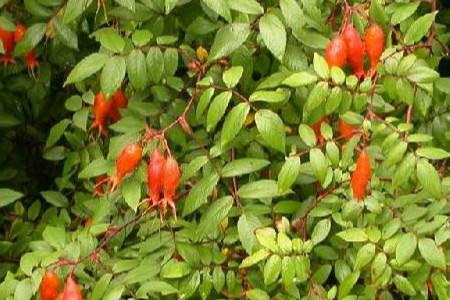
二、虫害
1、金龟子
养过这种植物的人应该在叶片上见过金龟子,常年种植的人可能会说这是一种健康的表现,代表植株并没有撒过药,可是我们应该知道,如果植物有一只金龟子那无关紧要。但是过多的虫害就是灾难了,金龟子喜食蔷薇的根茎、叶子。严重将影响花朵的产量和质量。
防治方法:可采用灯光、杨柳等方式吸引金龟子,从而减少其数量。

2、刺蛾
植物较为年长时,会很大程度吸引刺蛾,一般蔷薇的虫害时间主要集中在夏季炎热的夏季,最为严重的时期是夏末,气温高对刺蛾的发育其正作用。刺蛾会吃掉叶片,植物光合作用、生长发育的工具都无法具备,更无法成长,若是叶片在此期间得病,则这盆花可能损失过重,不幸死亡。
防治方法:冬季及时检查 是否有虫卵,应及时清楚掉虫卵。
0
0
文章
巴黎铁塔
2018年02月22日
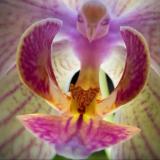
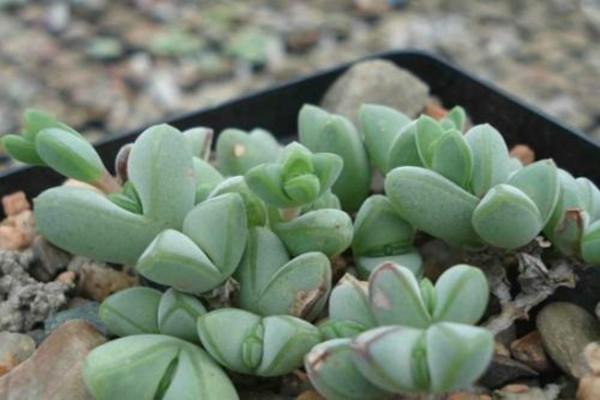
1.光照不足
肉友应该知道,肉肉都是非常喜欢阳光的,它也是这样,如果你没有满足它的光照所需,就会让叶子发黄变软。一般在夏天的时候,我们可以给它全天的日照,如果太阳光过强的话,可以稍微的进行遮挡一下。其它时间光照时间是没有要求的。
2.水分引起的
入夏之后,它就会进入到休眠的时期,所以这时候不要给它进行浇水,不然就会容易造成积水,然后根部烂掉,进而导致叶子出现问题。所以我们浇水是要看时间的。另外如遇到阴雨天的话,也是不能进行浇水的,平时的时候只要向它的叶片上面喷一些水就可以了,这样就可以了,也利于它度过夏天。从而叶子也不会再出现问题了。
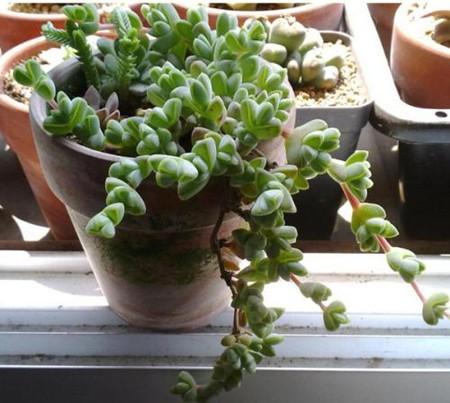
3.盆土不适合
一般像多肉植物都是喜欢疏松透气一点的土壤,碧玉莲也是这样的,如果在栽种的时候,选择的土壤不适合,透气性和排水性都比较差,那就会让它根部呼吸受限,这样子就没有办法向叶子传输营养,导致叶子出现问题。所以我们就需要给它换土,一定要找些满足它需求的土壤。这样才能让它更好生长。
4.通风不畅
我们只顾了满足它温度和阳光,却往往容易忽视给它进行适当的通风,就像是我们长时间不进行通风的话,身体还会出现各种问题,更何况是植物,所以对它进行通风也是很有必要的。这里要说的是,尤其是在夏天的时候,我们只是一味的给它降温,却往往容易忽视了通风,其实在这个时候,不仅要给它选择一些阴凉的地方,并且还要保证此地通风的良好,只有这样叶子才能时刻有光泽。
0
0
文章
权问薇
2018年02月22日


1.种子的处理
这个步骤是非常重要的,对于播种的成活率影响非常大。选种时应选择大小均匀、颗粒饱满、并且表面带着棕褐色光泽的。将选好的种子用水泡十二至二十四小时,泡好之后再用防腐药水泡五分钟左右以防止其腐坏,最后用清水洗净后晒干。
2.播种前的处理
应选择光照充足、排水通畅、土质松软且富有有机质的平坦土地作为播种地。不过,播种之前我们还得进行一些处理,就是对播种地进行浅耕、施上底肥,不作畦,但需将土地搂平,为夏天的排水做保障。
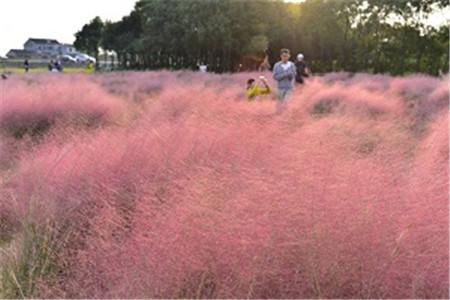
3.播种的处理
因它的种子非常小,种植不需要催芽,选择静风的天气,于早晨或傍晚撒种。播好之后,就需要覆盖土壤了,深度不需要太厚,覆土深度一厘米左右就行了。
4.出芽后的处理
保证所有条件的适宜,特别是温度和湿度,等待约五至九天就可以出苗了,对于苗期的管理主要以浇水为主。因为它比较适合野外养殖、生长速度比较快,我们需要在6-10月份格外注意水肥的管理,帮助它更好的生长开花结子。
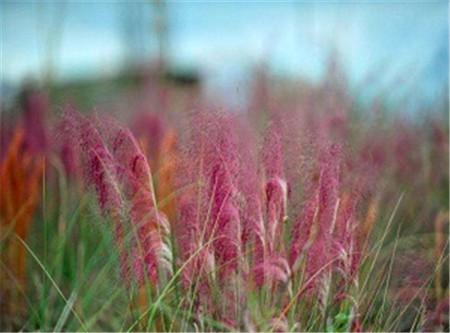
其他方式
除了播种这一种比较常见的方法之外,其他的方式诸如扦插之类都不太常用,所以这里就详细介绍了。
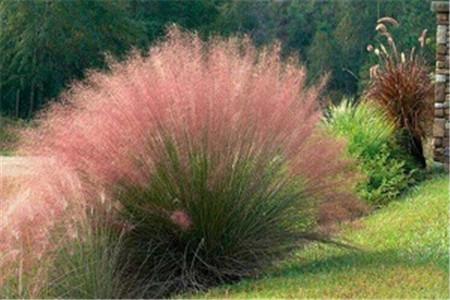
2
0
文章
八公
2018年02月22日


1.叶斑病
这种病害的病原在病残体上面或者是土里面可以过冬,随着一些风雨的传播,一般都是在温度相对高的时候开始发生。它症状就是在植株的叶子上面会产生大小不等、形状和颜色多样的斑点或者是斑块,有时候还会出现黑色的小点。那么这时候我们就要尽快的防治起来,及时的清理掉那些病叶,然后把它们集中烧了就可以。如果是在初期发病的话,就可以用一些药物进行喷洒防治。
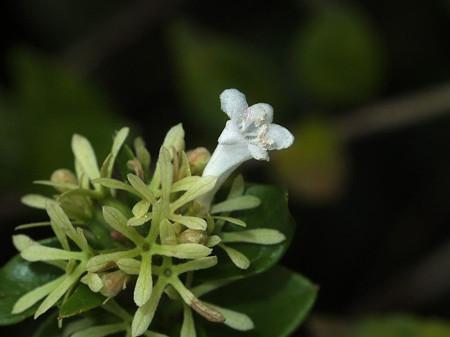
2.白粉病
这种病刚开始的时候,会在幼苗的嫩叶背面上面的主脉附近会出现一些灰褐色的斑点,然后以后就会开始蔓延到整个叶背,然后就会出现一层白粉,那么也可以有对症的办法进行处理,平时的时候一定要注意苗圃里面的清洁,再适当的疏苗,如果发现病株的话,要立即的拔出烧掉,如果病症很明显的话,可以用一些化学试剂进行喷洒,10天喷一次,连续喷射3到4次就可以了。

3.蚜虫
这种病虫对植物的危害也是非常大的,它专门去吸食植物的汁液,这样不仅可以阻碍糯米条的生长,传染一些病毒,而且还会造成长出来的花、叶子和芽的畸形另外它的繁殖能力也是非常的强,所以一定要及时的进行防治,不能让它对糯米条产生太大危害了。一般我们可以用灭蚜松这些化学试剂进行喷洒杀灭。
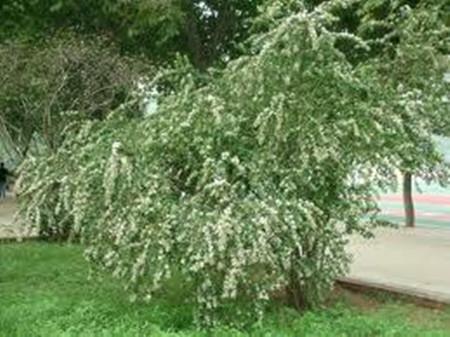
4.尺蛾
它对叶子的危害也是非常大的,如果糯米条上面出现这种害虫的话,那几天之内就会刻意将它的叶片全部吃光了。所以一定也要进行及时的应对,同样的也是要用一些专门的药物进行喷洒防治。
0
0
文章
权问薇
2018年02月22日

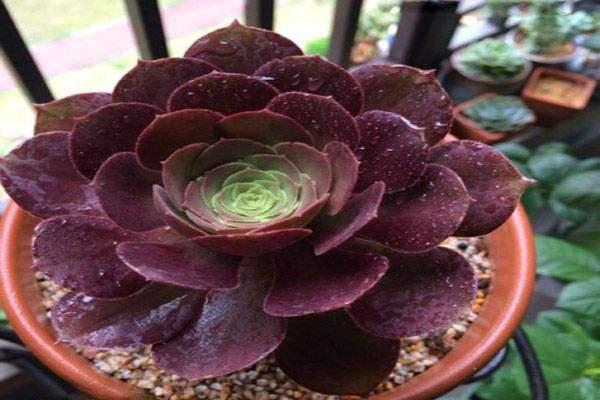
一、养护方法
1、温度
紫羊绒和很多花卉一样都喜欢温暖舒适的环境,而且不喜欢太湿润的环境,而且紫羊绒都能耐得住零度以下的低温,但是尽量让它们保持在温暖的环境生长,不然根茎可能会腐败。
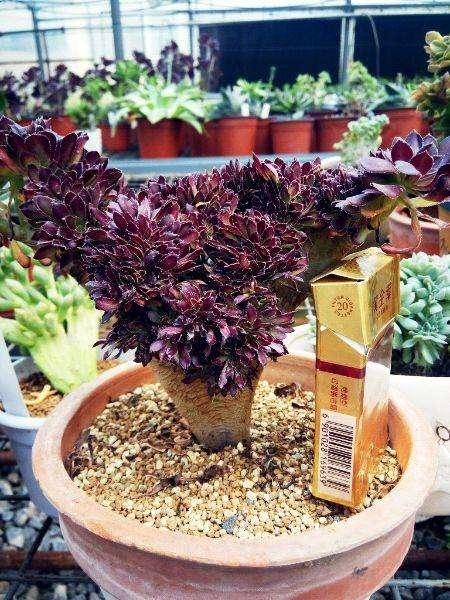
2、水分
紫羊绒特别适合懒人养,这是因为紫羊绒耐旱的能力一流,尤其是在它们生长的时节是可以不用给水的,但是该给水的时候就一定要保证紫羊绒的根部也能够吸收到水份,土层也要保持湿润,一般夏季正是紫羊绒的休眠期,这个时候就要控制水量了,尽量少补水,更不要让水在花盆中储蓄太久。
3、土壤
养紫羊绒的花盆土一定要透气性好,并且尽量让土壤稀松透气,这样方可让紫羊绒任意成长,如果想让花土透气性更好一些要在花土里加上一些珍珠岩,蛭石等成份。
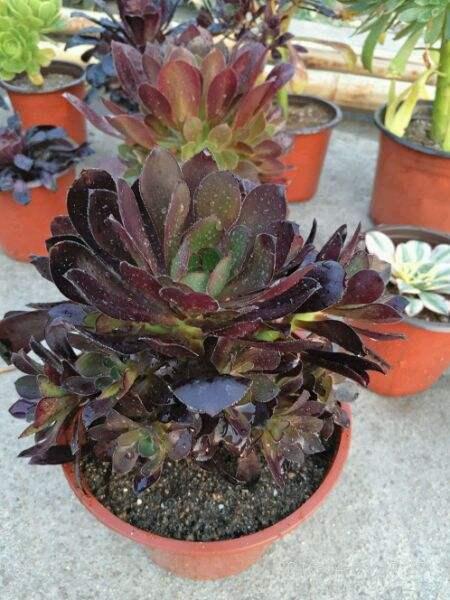
二、注意事项
紫羊绒的叶子是很容易生病的,一般在炎热的夏天到来的时候就会开始长出黑色的斑点,而这种现象都是因为叶子长期在强光下被照射,或者生长的环境不够通风或者透气性不佳等等,这种情况不要太着急可以选择用一些专门治疗这种状况的药水喷洒也可事先就进行预防,等到长出新的枝叶就代表这种疾病快好了。
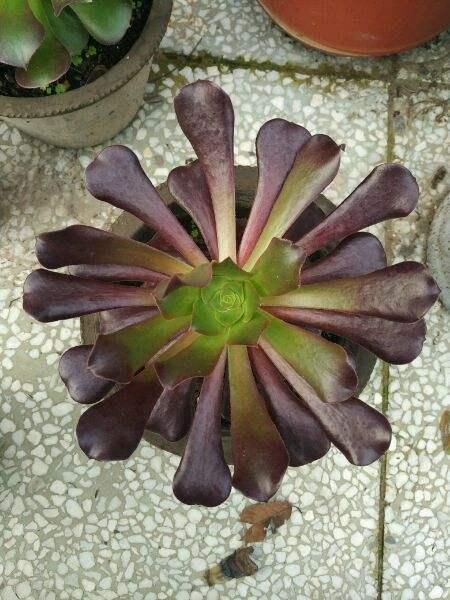
想要繁殖紫羊绒可以选择扦插的方法,这种方法能让这种花卉快速的生长,紫羊绒的枝叶不要修剪的太勤,这样反而能够促进紫羊绒枝叶的繁殖。而紫羊绒本身也确实是一件比较容易繁殖的花类品种,因此即便是生手也可以尝试养殖一下。
0
1


